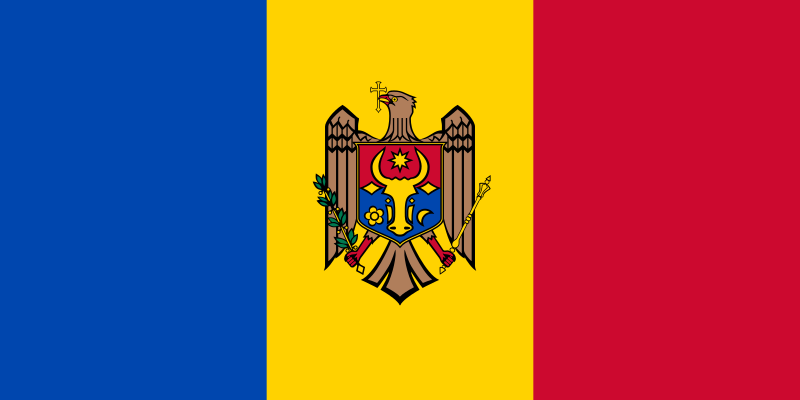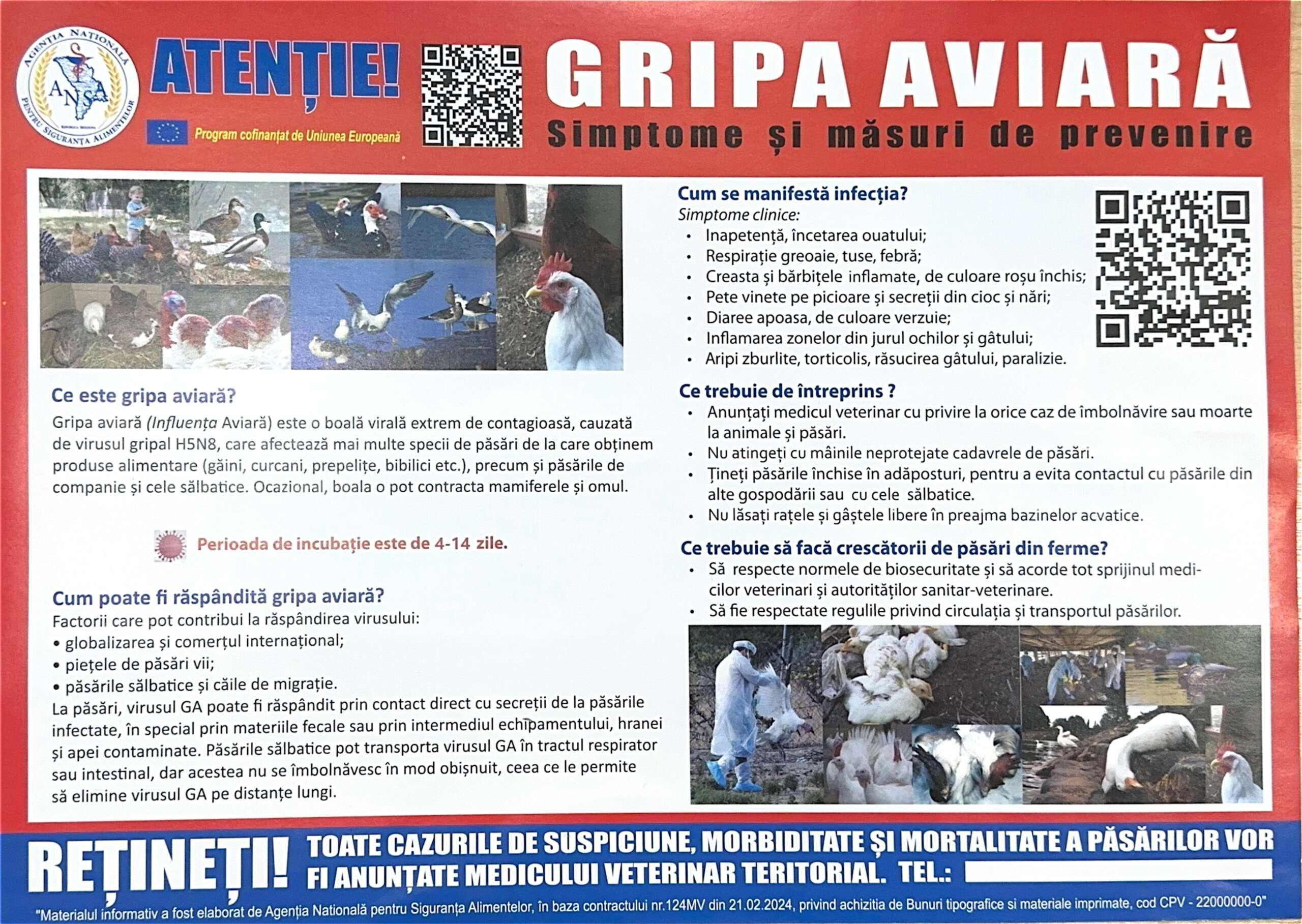District passport
Administrative-Territorial Structure of Cahul District
According to the Law on Administrative-Territorial Organization of the Republic of Moldova No. 764-XV of 27.12.2001, with subsequent amendments and additions, Cahul District is an administrative-territorial unit consisting of 55 localities, including the municipality of Cahul, 53 localities forming villages (communes), and one locality that is part of the municipality – Cotihana village. The district covers an area of 1,545 km² and has a population of 124,600 inhabitants.
Cahul District is part of the "Lower Danube" Euroregion, alongside Tulcea, Galați, and Brăila counties (Romania), Cantemir District (Republic of Moldova), and the Odessa region (Ukraine). It is also part of the "Black Sea" Euroregion, which promotes cross-border cooperation in the Black Sea border region.
The administrative center of the district is the municipality of Cahul. In terms of population, Cahul is the largest city in the southern region of the country and the 6th largest city in the Republic of Moldova, following Chișinău, Bălți, Tiraspol, Tighina, and Rîbnița.
The population density in Cahul District is 80.7 people/km², while the national average is 117 people/km².
On average, a rural locality in the district has a population of 1,550 inhabitants. Five localities have fewer than 200 residents (Spicoasa, Greceni, Iasnaia Poleana, Sătuc, Tudorești), while the most populated village is Colibași, with 6,009 inhabitants.
On average, there are 3.5 rural settlements per 100 km² in the district, compared to the national average of 4.9 settlements per 100 km².
Geographical Location
Geographically, Cahul District is located in the southern part of the Republic of Moldova, on the left bank of the Prut River. To the north, it borders Cantemir District, to the northeast and southeast, it includes localities that are part of the Gagauz Autonomous Territorial Unit (UTA Gagauzia), to the east it borders Taraclia District, to the south – Ukraine, and to the west, across the Prut River, Romania. The municipality of Cahul is situated on the Frumoasa River, 175 km from Chișinău and 60 km from Galați, Romania.
Through a 1,200-meter stretch along the Danube River, the district has access to the Black Sea and the aquatic basin of Central and Eastern Europe.
The district is located on the Lower Prut Plain, at an altitude of 119 meters above sea level. The terrain descends in steps from north to south, including the Tigheci Hills in the north, the Cahul Plain in the center, and the depressions of the Cahul, Salcia, and Ialpug rivers in the east. In the western part, the land is lower, consisting of ancient terraces of the Prut River, fragmented by valleys and ravines.
The soil cover is diverse, with predominant ordinary and carbonate chernozem soils, as well as slightly saline meadow chernozems. In the Prut River floodplain, alluvial meadow and marshy soils can be found.
The average soil fertility score in Cahul District, according to the Land Cadastre of the Republic of Moldova, is 58 points, compared to the national average of 64 points.
Land Fund Structure
The total area of the district is 154,528.35 ha, including:
-
Agricultural land – 98,871.74 ha (64% of the total area), including:
- Arable land – 80,203.04 ha (51.9%)
- Perennial plantations – 17,915.74 ha (11.6%), of which:
- Orchards – 2,653.88 ha (1.7%)
- Vineyards – 14,951.74 ha (9.7%)
- Others – 310.12 ha (0.2%)
- Pastures – 410.79 ha (0.3%)
- Other agricultural land – 342.17 ha (0.2%)
-
Land designated for residential construction and social buildings – 8,550.59 ha (5.5%)
-
Land for industry, transport, telecommunications, and other special purposes – 2,202.14 ha (1.4%)
-
Land for nature protection, health care, recreational activities, historical-cultural sites, suburban, and green zones – 106.37 ha (0.1%)
-
Forest fund land – 17,773.51 ha (11.5%)
-
Water fund land – 6,063.91 ha (3.9%)
-
Reserve land fund – 20,953.09 ha (13.6%)
Natural Reserves
The scientific reserve "Lower Prut" is the most important protected natural area in the district. Located in the floodplain of the Prut River, on the western side of Slobozia Mare village, Cahul district, the reserve covers an area of 1691 ha. Two-thirds of the reserve's area is occupied by the waters of Lake Beleu, while the remaining territory consists of a network of wetlands that together form a unique ecosystem of importance not only at the national but also at the international level. The vegetation of the area includes over 193 species of vascular plants. The faunal complex is characteristic of aquatic ecosystems and is represented by about 190 bird species, 34 mammal species, 7 reptile species, 11 amphibian species, and 27 fish species. The Red Book of the Republic of Moldova includes 21 species of birds, such as swan, gray goose, grey and red heron, pelican, large white heron, and others, as well as 5 species of mammals, 2 species of reptiles, and 1 amphibian species that inhabit this area.
Vegetation and Wildlife
In the southern part of the district, steppe vegetation has been preserved. Forests cover an area of 18.5 thousand ha. The largest forest areas are occupied by black locust, oak, and elm. The animal world is represented by hares, foxes, deer, badgers, wild boars, martens, and weasels. Among the birds, quails, ducks, and wild geese are predominant. Lakes and ponds are rich in fish resources.
The climate of the territory is temperate-continental, with relatively mild winters and hot summers. It is considered the warmest region in the country, where daily temperatures are 2-3 degrees higher than in other regions. The amount of atmospheric precipitation during the active vegetation period is 320-380 mm.
The hydrological network is represented by the Prut River with its left tributaries Larga, Cahul, and Salcia Mare. The Prut River flows into the Danube River at Giurgiulești and is navigable only on its lower course. The 1200-meter section along the Danube coast provides access to the Black Sea and the water basin of Central and Eastern Europe. The district is home to the largest natural lakes in the country – Beleu and Manta.
By national affiliation:
Moldovans/Romanians – 76.3%,
Ukrainians – 6.5%,
Russians – 7%,
Bulgarians – 5%,
Gagauzians – 3.1%,
Other nationalities – 0.9%.
ECONOMIC DEVELOPMENT
Overview
In the Cahul district, over 24,900 economic agents are active – natural and legal persons: commercial companies, municipal and state enterprises, peasant farms, cooperatives, etc.
Most of the economic agents are in agriculture (81.2%, mainly peasant farms), in trade and services (9.8%), transport and construction (4.0%).
The number of employees is 19,100 (2015), a decrease of about 1,286 compared to 2011.
The average gross monthly salary is around 3855.6 lei (2015), which is 16.4% below the national average.
The economic base of the district is the agro-industrial complex, represented by enterprises that process agricultural raw materials.
Agriculture
Agriculture remains a very important sector that plays a vital role in the socio-economic development of the district. In the Cahul district, the total area of agricultural land is about 99 thousand hectares.
The agricultural land is managed by over 100 agricultural enterprises from the associated sector and about 20.2 thousand peasant farms from the individual sector. Currently, 9 agricultural production cooperatives operate in the district, covering an area of 6.9 thousand hectares; 9 joint-stock companies owning 1.9 thousand hectares; 79 limited liability companies managing 42.8 thousand hectares; 3 state experimental enterprises managing 1.2 thousand hectares; the 20.2 thousand peasant farms own 34.9 thousand hectares; the remaining 11.3 thousand hectares are owned by individuals.
The use of agricultural land in the district favors the growth of plant production. It is evident that the main cereal crops cultivated by agricultural producers are wheat, barley, corn, and legumes for grains; among technical crops – sunflower and rapeseed, which occupy about 80% of the planted areas.
Annually, the district produces about 100-120 thousand tons of cereals, including 48-50 thousand tons of wheat, 48-50 thousand tons of corn, 14-16 thousand tons of legumes for grains, 24-25 thousand tons of sunflower, and 5-6 thousand tons of rapeseed.
Viticulture
Viticulture has always been an important sector for the national economy of the republic, being a historical-traditional activity, especially for the southern part of the country. Cahul District, located in this area, enjoys the most favorable pedo-climatic conditions, and due to these factors, an intensive development of viticulture and, possibly, winemaking should be considered.
Annually, grape producers produce 45-65 thousand tons of grapes, of which 35-50 thousand tons are technical varieties. The quantity of grapes varies from year to year depending on the harvested area and climatic conditions.
For processing technical grape varieties, there are 7 winemaking enterprises operating in the district: LLC “Podgoriile Dunării” Cahul, LLC “Vinia Traian” Găvănoasa village, LLC “Vierul Vin” Burlacu village, JSC “Vismos” Moscovei village, IM “Grappe Valley” Borceag village, LLC “Agrosud Resurse” Brînza village, JSC “Slobozia Mare” Slobozia Mare village, each having an annual processing capacity of 8-10 thousand tons.
Vegetable Growing
Vegetable growing occupies insignificant areas. The main reason for the decrease in vegetable production is the lack of vegetable processing enterprises. This activity is carried out only to satisfy the local market.
Industry
The existing industrial complex includes over 100 industrial enterprises in various sectors located in the urban area of Cahul, employing over 3000 workers.
In the food industry: “Cahul Cheese Factory” JSC with a capacity of over 70 tons of dairy products, 2.3 tons of butter, and over 0.5 tons of cheese; “BereUnitac” Brewery LLC with a capacity of over 1.6 million bottles/year; “Cahul Pan” Bakery JSC, “Pâine şi tehnologii” LLC, “Savit-Sim” LLC with a total capacity of over 37 tons of bakery products per day, etc.
In the light industry: “Tricon” Knitting Factory JSC with a capacity of 300,000 pcs/year and “Laboratorio TessileMol” LLC with a capacity of 250,000 pcs/year, “Tricou Fantasy” Clothing Factory LLC with a capacity of 150,000 pcs/year.
Furniture industry: LLC “Gebhardt,” IP “Renaissanco-Podvalenko.”
Commerce and Services
Currently, there are 781 commercial objectives operating in the Cahul District, including 462 in the urban area and 319 in the rural area, represented by shopping centers and temporary constructions (kiosks, booths) or adapted constructions lacking necessary urban amenities. The total commercial area in the district is 22.1 thousand m², with 11.6 thousand m² in the urban area and 10.5 thousand m² in the rural area. On average, in the district, there are 177 m² of commercial space per 1000 inhabitants, including 291 m² in the urban area and 123 m² in the rural area.
Other Types of Activities
In the district, there are enterprises producing building materials, transportation organizations, public services, and storage services, as well as a number of furniture manufacturing enterprises and other production sectors.
In most villages in the Cahul district, there are folk craftsmen specializing in wood processing, wickerwork, embroidery, musical instrument making, etc.
Tourism
The rural environment of Cahul District, with its agricultural communities and picturesque villages, is an important source for providing traditional rural accommodation services, offering visitors the possibility to engage in rural activities and concerns, to familiarize themselves with local folklore and traditions, to present crafts with the possibility of participating in the working process, and to purchase handcrafted products.
In 1980, Cahul was granted the status of a spa town. Since 1986, the "Nufărul Alb" spa resort has been operating. The resort complex has 506 accommodation places, a dining room with 506 places, and a club with 250 places. Annually, over 9000 people relax at the resort. The mineral water at the resort is unique due to its chemical composition. The therapeutic-diagnostic base of the sanatorium includes a bath section, a hydrotherapy cabinet, classic and underwater massage cabinets, a physiotherapy section, an acupuncture cabinet, cabinets for therapeutic physical culture and mechanotherapy.
In the city, there are 8 restaurants, 6 hotels, 244 bars, and cafes.







































